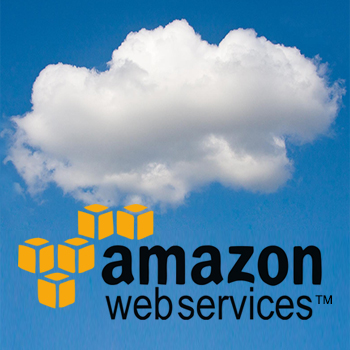Amazon Exposes How Profitable The Cloud Can Be

Amazon recently shared its first quarter earnings for this year with “Amazon web services” reported to have generated a staggering $1.57 billion in Q1 sales.
As reported by Barron’s Tiernan Ray, “Amazon.com invited the world onto its cloud last Thursday, and Wall Street was bedazzled.”
Ray continues, for the first time ever, the company disclosed financials for its cloud computing operation, Amazon Web Services (AWS), and the Street was shocked to discover that not only was the business profitable, it was very profitable.
Amazon’s AWS began in 2006 as an offshoot of the company’s online retail empire. Amazon had gotten so good at running computers to serve its Website that it decided to start charging others to use those computers, rather like the old time-share mainframes of 50 years ago.
The results are impressive. AWS made $5.16 billion in revenue over the past 12 months, and in the latest quarter grew 49%, year-on-year, and earned $680 million, a 13% operating margin.
Going into Thursday’s earnings conference, analysts had anticipated that AWS was unprofitable, perhaps very much so, with some estimates as low as a negative 20% operating profit margin.
Amazon shares soared 14% Friday, to $445.10, and hyperbole flowed from stunned analysts. “Pulling a strong quarter out of its AWS,” wrote Robert W. Baird’s Colin Sebastian.
Amazon Web Services (AWS)

Image: Shannon Stapleton/Reuters
“Amazon Web Services is a $5 billion business and still growing fast - in fact it’s accelerating,” said Jeff Bezos, founder and CEO of Amazon.com. “Born a decade ago, AWS is a good example of how we approach ideas and risk-taking at Amazon.
We strive to focus relentlessly on the customer, innovate rapidly, and drive operational excellence. We manage by two seemingly contradictory traits: impatience to deliver faster and a willingness to think long term. We are so grateful to our AWS customers and remain dedicated to inventing on their behalf.”
Nobody knew exactly how big a deal until Thursday, when Amazon revealed that AWS earned profits of $265 million on $1.57 billion in revenue during the first quarter. If nothing changes for the rest of the year, that means AWS will earn $1 billion on more than $6 billion in revenue.
Amazon Web Services Is Not The Only Cloud Platform
Matt Rosoff of Business Insider clearly indicates in his article “Amazon’s true brilliance shone this week in a tale of three clouds” that there are two other companies who are betting big on the cloud reported earnings this week, and both trumpeted numbers that appeared bigger than Amazon’s.
On Monday, IBM said it had $7.7 billion in cloud revenues. But digging in a little deeper, IBM acknowledged that only $3.8 billion of that was “as-a-service” revenue.
In plain English? Most of what IBM counts as “cloud” is actually known as “hybrid cloud,” which includes a lot of equipment that companies still run in house. It also includes a category known as “private cloud,” which basically means the customer buys a bunch of hardware and software (and consulting expertise) from IBM and runs all that stuff itself, but uses certain new technology that is similar to the technology used by public cloud providers like Amazon, which makes these data centers more flexible and lower cost and so forth and so on.
When you strip all that stuff out, IBM is on track to earn $3.8 billion this year from the hosted services that customers pay for on a subscription basis.
That’s not bad, but it’s just a drop in IBM’s annual revenue bucket: $92.8 billion last year.
Microsoft also reported earnings this week. It boasted that its cloud business is on track for revenue of $6.3 billion this year, and growing fast - it was $5.5 billion at the end of December.
But Microsoft’s cloud business includes Office 365, a set of business applications that run in Microsoft’s data centers. Those apps are more equivalent to Salesforce or Workday than to what Amazon is doing. Microsoft’s closest equivalent to AWS is Azure, which is a smaller business.
Microsoft would argue that the “cloud” is kind of a nebulous and meaningless term anyway. A lot of Microsoft’s big enterprise customers use a combination of Microsoft software running in their own data centers and in Microsoft’s Azure cloud, and move workloads back and forth - that hybrid model again.
Really, to Microsoft, it’s all the same business: Helping customers be more efficient with their technology. And that business - Commercial, as Microsoft calls it - is a juggernaut, earning $10.4 billion on $12.8 billion in revenue just last quarter. Also, revenue grew 5% from last year, off an absolutely enormous base. (Software is a really nice business once you reach scale.)
But this is exactly why Amazon’s cloud business is so amazing.
When Amazon got into the cloud game, it had no enterprise business to leverage. It had no relationships with CIOs and IT departments or longstanding software licensing agreements with Fortune 500 companies. It had no salespeople. It had no enterprise support staff.
All it had was some really well-run infrastructure and a brainstorm to turn that into a working business.
Now that it’s got those customers, they’re not likely to leave. As CEO Jeff Bezos put it in his annual letter to shareholders on Friday, “We work hard – very hard – to make AWS as easy to use as possible. Even so, it’s still a necessarily complex set of tools with rich functionality and a non-trivial learning curve. Once you’ve become proficient at building complex systems with AWS, you do not want to have to learn a new set of tools and APIs assuming the set you already understand works for you.”
Related: Helping Organizations Manage and Govern Complex Data Flows between Business Partners
Amazon skeptics always point out how the company never shows a big profit, how it plows everything right back into the business. But it’s exactly this kind of long-term thinking that allowed Amazon to create a huge business out of nowhere.
Amazon bulls believe the company can do this again, and again.
Related: Should Wall Street Care About Your Master Data Management Strategy?

Article Topics
Axway News & Resources
10 Best Practices for Thriving in the API World Forget About Cloud Infrastructure, It’s Now About Apps & API’s, Says Amazon’s CTO 2015 is Getting an Extra Second and that Could Be Problematic for The Internet Top Ten Security Considerations for the Internet of Things AS4: 4 Ways the New Web Services Interoperability Standard Can Benefit Your Digital Business IDC Marketscape: B2B Integration Gateway Software Axway Profile Moving Integration and Interactions Forward in the Era of Digital Business More AxwayLatest in Technology
Spotlight Startup: Cart.com is Reimagining Logistics Walmart and Swisslog Expand Partnership with New Texas Facility Taking Stock of Today’s Robotics Market and What the Future Holds Biden Gives Samsung $6.4 Billion For Texas Semiconductor Plants Apple Overtaken as World’s Largest Phone Seller Walmart Unleashes Autonomous Lift Trucks at Four High-Tech DCs Talking Supply Chain: Procurement and the AI revolution More Technology













